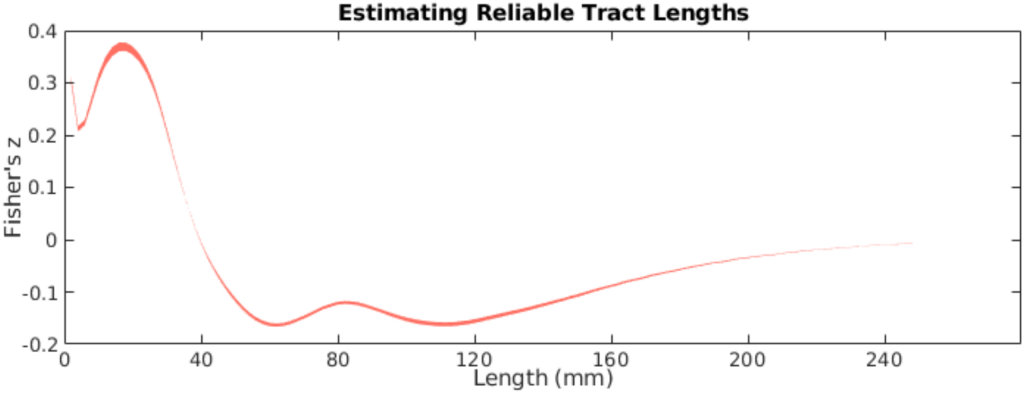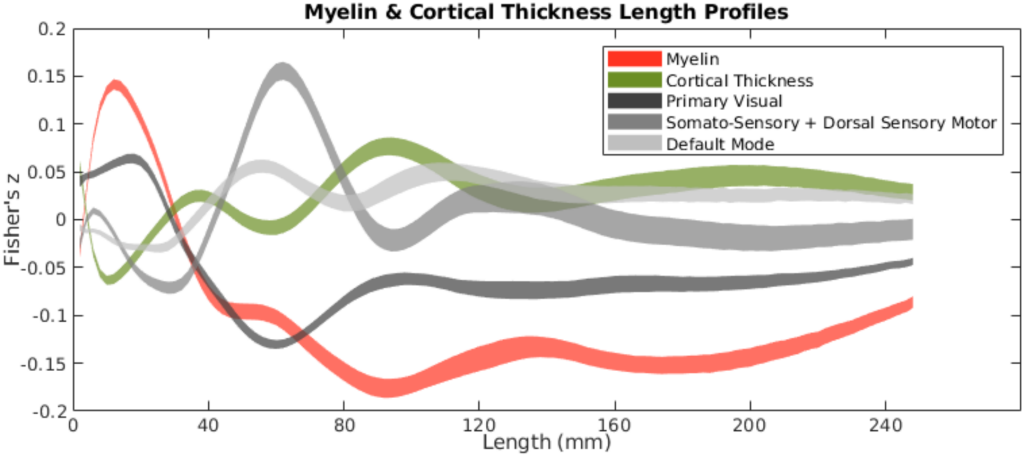FULL TITLE:
Fiber Length Profiling: A Novel Approach to Structural Brain Organization
SPECIES:
Human
DESCRIPTION:
UPDATE: The data have been re-run following the identification of a bug in the algorithm for calculating the streamline length. The general conclusions remain unchanged, however, the updated data can be found here:
https://balsa.wustl.edu/study/gmq9M
This scene provides the images and final data from the Bajada et al (2018) "Fiber Length Profiling: A Novel Approach to Structural Brain Organization".
For completeness, all images from the paper have been uploaded into BALSA scenes, however, only figures 2 and 4 can be manipulated and explored within wb_view.
All other images are stillframes and were generated in MATLAB (the .fig files can be found within a separate directory once downloaded).
To recreate the image scenes in wb_view, please select the CTL-76.scene file from within wb_view, then select the desired figure number.
To explore the average cortical tract length maps please select the CTL-76.spec file from within wb_view.
All other images can be explored and manipulated by opening the relevant MATLAB fig file from within MATLAB.
ABSTRACT:
There has been a recent increased interest in the structural connectivity of the cortex. However, an important feature of connectivity remains relatively unexplored; tract length. In this article, we develop an approach to characterize fiber length distributions across the human cerebral cortex. We used data from 76 participants of the Adult WU-Minn Human Connectome Project using probabilistic tractography. We found that connections of different lengths are not evenly distributed across the cortex. They form patterns where certain areas have a high density of fibers of a specific length while other areas have very low density. To assess the relevance of these new maps in relation to established characteristics, we compared them to structural indices such as cortical myelin content and cortical thickness. Additionally, we assessed their relation to resting state network organization. We noted that areas with very short fibers have relatively more myelin and lower cortical thickness while the pattern is inversed for longer fibers. Furthermore, the cortical fiber length distributions produce specific correlation patterns with functional resting state networks. Specifically, we find evidence that as resting state networks increase in complexity, their length profiles change. The functionally more complex networks correlate with maps of varying lengths while primary networks have more restricted correlations. We posit that these maps are a novel way of differentiating between ‘local modules’ that have restricted connections to ‘neighboring’ areas and ‘functional integrators’ that have more far reaching connectivity.
PUBLICATION:
NeuroImage
- DOI:
10.1016/j.neuroimage.2018.10.070
- Claude J Bajada
- Jan Schreiber
- Svenja Caspers
- University of Malta
- Forschungszentrum Jülich
- University of Düsseldorf







